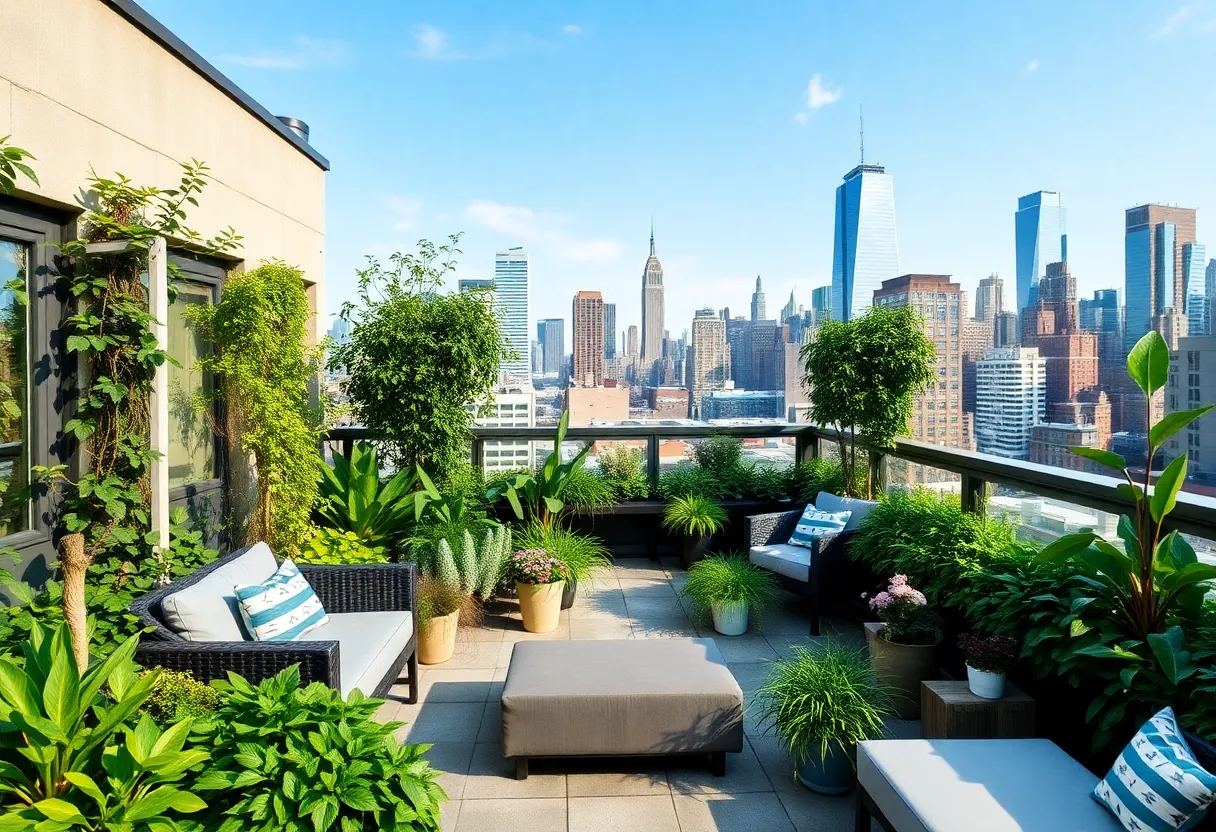7 Tips for Creating a Beautiful Rooftop Garden in New York City
Transforming a rooftop within the dense urban environment of New York City into a lush, thriving garden demands strategic planning and thoughtful execution. Limited space, strict building regulations, and challenging environmental conditions require a tailored approach. Here are seven essential, detailed tips to guide you in establishing a stunning and sustainable rooftop oasis that melds functionality with aesthetic appeal.
1. Understand Building Regulations and Structural Limits
Before beginning your rooftop gardening project, a comprehensive understanding of building regulations is imperative. Each NYC building—be it a cooperative, condominium, or rental—has specific policies regarding modifications to the rooftop. It’s critical to consult management and review legal documents to determine if an Alteration Agreement or special permits are required. Failing to do so can result in legal or safety issues down the line.
Simultaneously, evaluate the structural integrity of your roof. Not all rooftops are engineered to bear additional loads; overloading can compromise safety and cause damage. Engaging a qualified structural engineer for assessment is essential. They will analyze the existing load capacity, factoring in elements like weight of containers, soil, plants, furniture, and any built-in structures.
Failure to account for these considerations can lead to severe safety hazards and potential building violations, making this preparatory step fundamental to a successful rooftop garden project.
2. Select Appropriate, Lightweight Containers
Container choice directly influences the garden’s overall weight and sustainability. Traditional ceramic or clay pots are aesthetically appealing but often too heavy for rooftop applications. Instead, focus on materials such as fiberglass, high-grade plastics, or fabric grow bags—which are significantly lighter and easier to handle.
In addition to material selection, use lightweight growing mediums. Traditional potting soil can be dense, adding unnecessary weight. Mix soil with perlite or vermiculite to maintain nutrient levels and drainage while reducing weight. This combination ensures healthy plant growth without overstressing the roof’s structural limits.
This strategic selection ensures that your garden remains manageable, reduces structural load, and simplifies maintenance tasks, thereby extending the lifespan of your rooftop installation.
3. Plan for Wind and Sun Exposure
New York City rooftops are exposed to powerful winds and intense sunlight, both of which impact plant health and comfort. Because of this, climate-specific protection measures are vital. Installing windbreaks such as screens or lattice fencing can dramatically mitigate wind impact, protecting both plants and garden structures.
Likewise, incorporate shade solutions like pergolas, retractable awnings, or shade sails. These not only shield plants from afternoon sun stress but create a comfortable environment for relaxation or social gatherings.
Strategic shading reduces water loss, prevents plant scorching, and enhances usability of your outdoor space throughout different times of day, ensuring your garden’s resilience in NYC’s variable microclimates.
4. Choose Wind-Resistant and Native Plants
The success of a rooftop garden hinges on selecting plants adapted to the city’s environmental conditions. Prioritize wind-resistant species and low-growing plants that can maintain stability in breezy settings.
Grouping plants into microclimates enhances their protection against gusts. Position taller, more delicate species near windbreaks or closer to parapets, and cluster containers to create shelter for sensitive varieties.
Incorporate native plants wherever possible. They are naturally adapted to the local climate, requiring fewer resources such as water and maintenance. Supporting native biodiversity contributes positively to urban ecosystems, and their resilience ensures your garden remains sustainable over time.
5. Implement an Efficient Irrigation System
Consistent watering underpins the vitality of your rooftop plants. A professional drip irrigation system with timers guarantees precise delivery of water and simplifies maintenance. It minimizes waste and prevents overwatering, a common challenge in exposed rooftop environments.
Grouping plants with similar water needs allows for efficient zone management. Integrate rainwater harvesting systems where feasible to utilize free, eco-friendly water sources, promoting sustainability and reducing your utility bills.
This automation and resourcefulness maintain optimal moisture levels, discourage plant stress, and ensure your garden flourishes regardless of external weather conditions.
6. Incorporate Comfortable Seating and Lighting
A rooftop garden isn’t complete without spaces designed for relaxation and entertainment. Use weather-resistant furniture crafted from materials like teak, aluminum, or treated wicker, which withstand sun, rain, and wind.
Position seating areas in shaded zones, utilizing umbrellas, pergolas, or natural shade from plants. Adding soft cushions and pillows enhances comfort and invites prolonged visits. Opt for durable fabrics, such as acrylic or solution-dyed polyester, designed for outdoor use.
Effective lighting extends usability into the evening. Incorporate string lights, lanterns, or solar-powered fixtures to create ambiance. Thoughtful lighting elevates aesthetics and safety while encouraging enjoyment during night hours.
7. Ensure Safety and Accessibility
Safety must always be prioritized in rooftop design. Verify that parapet walls or railings are set at a minimum height of 42 inches in accordance with building codes. Adequate barriers prevent accidental falls, especially in shared or frequently used spaces.
To prevent children from using planters as stepping stools, choose planters that are flush with parapet height. Similarly, avoid placing furniture close to edges. Anchor all structures securely to withstand high winds, and periodically inspect for stability or damage.
Consider accessibility features such as ramps or wide pathways, enabling easy movement for all users. Incorporate lighting along walkways for safety during nighttime use. Comprehensive safety measures transform your rooftop into a secure, welcoming retreat suitable for all.
Conclusion
Creating a *beautiful rooftop garden in New York City* combines careful compliance with regulations, strategic plant and container choices, environmental protections, and safety considerations. Every element should serve a dual purpose: aesthetic enhancement and functional resilience.
Careful planning upfront minimizes challenges later, ensuring your urban oasis remains sustainable and enjoyable. With proper techniques, your rooftop can become a private sanctuary that elevates your living experience amidst the city skyline.
Author: STAFF HERE NEW YORK WRITER
The NEW YORK STAFF WRITER represents the experienced team at HERENewYork.com, your go-to source for actionable local news and information in New York, the five boroughs, and beyond. Specializing in "news you can use," we cover essential topics like product reviews for personal and business needs, local business directories, politics, real estate trends, neighborhood insights, and state news affecting the area—with deep expertise drawn from years of dedicated reporting and strong community input, including local press releases and business updates. We deliver top reporting on high-value events such as New York Fashion Week, Macy's Thanksgiving Day Parade, and Tribeca Film Festival. Our coverage extends to key organizations like the Greater New York Chamber of Commerce and United Way of New York, plus leading businesses in finance and media that power the local economy such as JPMorgan Chase, Goldman Sachs, and Bloomberg. As part of the broader HERE network, including HEREBuffalo.com, we provide comprehensive, credible insights into New York's dynamic landscape.





